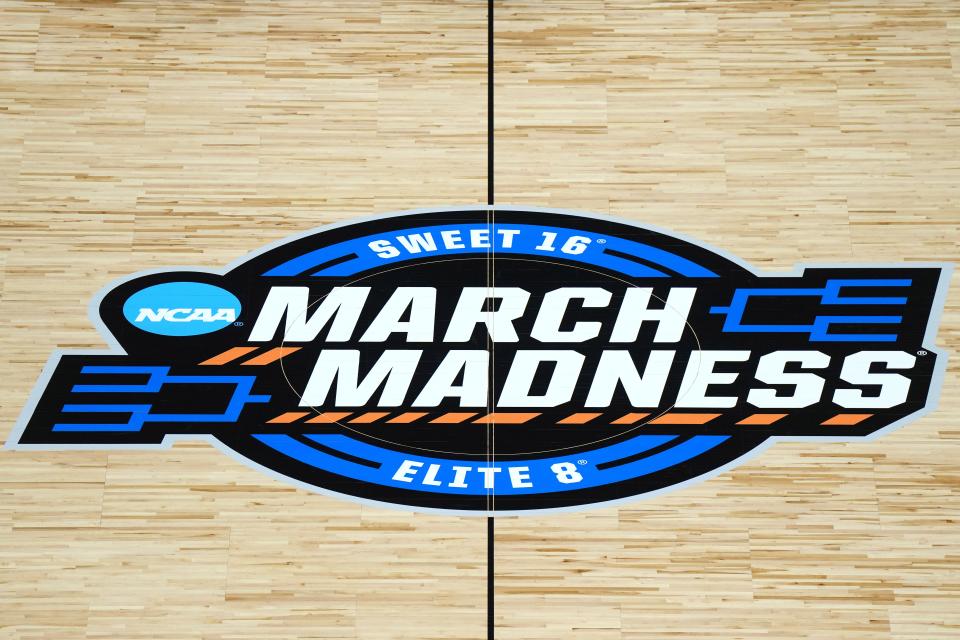How does Selection Sunday work? What to know about how March Madness fields are selected
It's March, which means it's almost time for one the great spectacles in all of college sports: the NCAA basketball tournament.
But before brackets can be busted and teams can have their one shining moment, everyone must see what their fate in the tournament will be on Selection Sunday. Most teams know if they'll be in or out of the tournament, but there are some on the bubble, unsure if they'll hear their name reveled in the bracket. There's also some mystery for those teams that know they'll be in the tournament, as they're mostly unsure what seed they'll be and where they will play.
But how does Selection Sunday work, and how are the tournament participants decided? It sounds complicated, but the selection process can be simply broken down. Here's what to know before the bracket is revealed.

When is Selection Sunday?
Selection Sunday for both the men's and women's tournaments is Sunday, March 17.
How does Selection Sunday work?
On Selection Sunday, the full bracket will be revealed on CBS, with matchups for every first-round game, as well as location, unveiled.
Who decides who gets in March Madness?
A 12-person selection committee decides who will be in the tournament, as well as where each team is seeded and will play. Southwestern Athletic Conference commissioner Charles McClelland serves as the chairperson of the men's committee, which is comprised of school athletic directors and conference commissioners.
There are rules in place to prevent members of the committee from taking part in any favoritism, such as not being allowed to be present when their school or conference is being discussed.
How many teams make March Madness?
There will be 68 teams that make the tournament, including the eight teams that will have to play in the First Four games.
Who plays in March Madness?
The winners of the 32 conference tournaments are automatically given a spot in the tournament, regardless of record. The remaining 36 spots are at-large bids determined by the committee.
How are March Madness bids determined?
There are several different resources for the committee to choose the best 36 at-large teams, such as record and strength of schedule. But perhaps the most important one is the NET ranking.
The NET ranking looks at a team's record and résumé, which then ranks all teams in Division I. Games are divided into four quadrants, and a team's quadrant record depends on who they are playing and where. This is how quadrant games are broken down:
Quadrant 1: Home 1-30, Neutral 1-50, Away 1-75
Quadrant 2: Home 31-75, Neutral 51-100, Away 76-135
Quadrant 3: Home 76-160, Neutral 101-200, Away 135-240
Quadrant 4: Home 161-353, Neutral 201-353, Away 241-353
The more Quad 1 wins, the better chance for a team to be selected in the tournament. Considering the NET ranking and other factors, the committee will then come up with the 36 best at-large teams to be selected. There are no limits to how many teams from a certain conference gets selected.
How are March Madness seeds determined?
After the committee selects the 68 teams to be in the tournament, it ranks all of them 1 through 68. Once all the teams are ranked, every four teams are evaluated in the same seed line. Example: Nos. 1-4 will be the No. 1 seeds, Nos. 5-8 will be the No. 2 seeds and so on.
The four lowest-ranked automatic qualifying teams will play in the First Four games as 16 seeds, while the four lowest at-large teams will compete in the other First Four games, typically as a No. 11 or No. 12 seed.
How is it determined where teams play in March Madness?
Once the seeds for each team are determined, the committee must then place them in the regional location that makes sense and preferred, as well as the first- and second-round sites. All tournament locations are predetermined, so the higher the seed, the better the site location for the team.
Example, if the No. 1 seed is Houston, it will get to play in the South region, which takes place in Dallas. It likely would get to pick the location for the first two games, which would be in Memphis since it's the closest spot to the school. The No. 1 seeds typically get the best possible location for them, and it could be a prime location for seeds Nos. 2-4 as well.
The committee attempts to put the bracket in snake order, like the No. 5 overall seed will be in the same region as the No. 4 overall seed, but there are restrictions such as:
First four teams from the same conference must be in different regions if they are a Nos. 1-4 seed.
Teams from the same conference cannot meet before a regional final if they played each other three times during the regular season and conference tournament.
Teams from the same conference cannot meet before a regional semifinal if they played each other two times during the regular season and conference tournament.
Teams from the same conference cannot meet before the second round if they played each other once during the regular season and conference tournament.
This article originally appeared on USA TODAY: March Madness Selection Sunday: How does tournament selection work?

